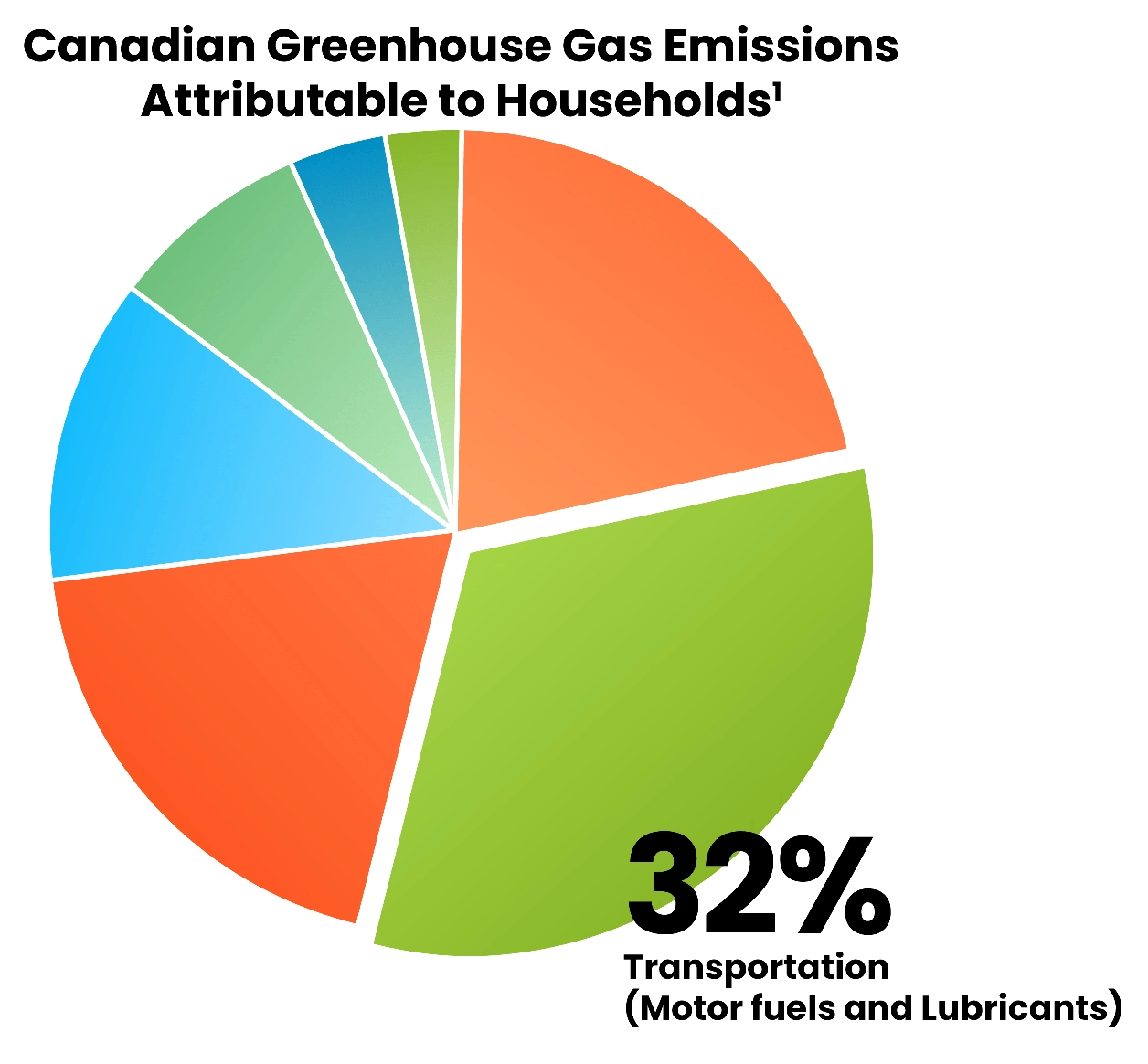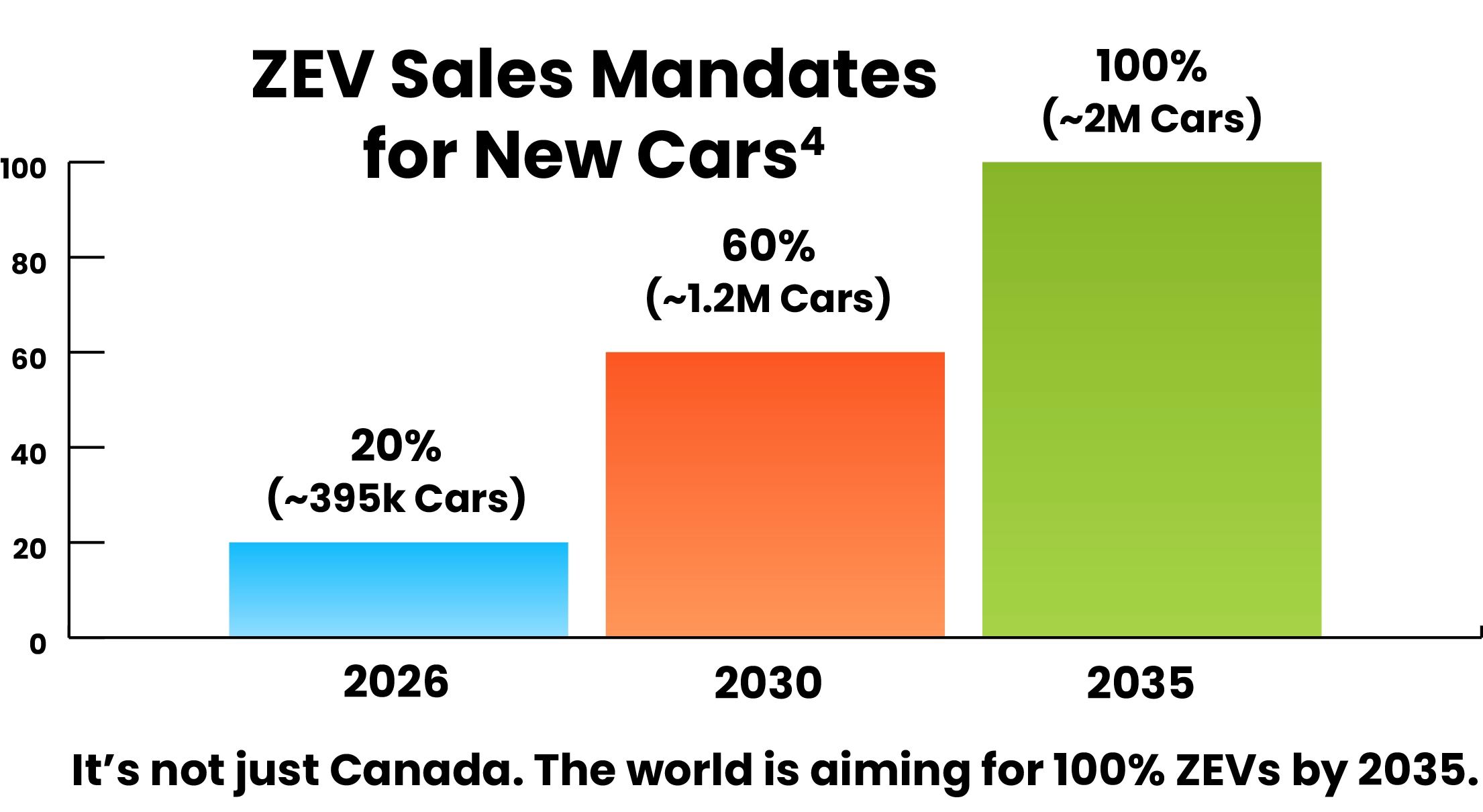Areas of Action: Your Transportation
Decarbonizing personal transportation is a ‘big rock’ shift that is happening but needs a lot more momentum.
Putting this into your committed 1–6 year plan will go a long way to reducing your footprint and it will enable you to step into our low carbon future in alignment with Canada’s Net Zero plan.
What needs to change?
• Personal gas-fuelled cars.
• Fossil fuel based public/shared transportation.
• Active Transport (walking, biking)
• Clean Public transportation
• Green Carshares, rideshares, carpooling
• E-bikes, e-scooters
• Zero emission vehicles
Why is this so important?
Transportation accounts for about 32% of Canadian household emissions.
Some of the major trends towards decarbonization are to switch to (primarily) electric vehicles, and build infrastructure that supports active transportation and better, cleaner public transportation as well as shifting to cities and lifestyles that reduce the need for long-distance transportation.
Why so urgent?
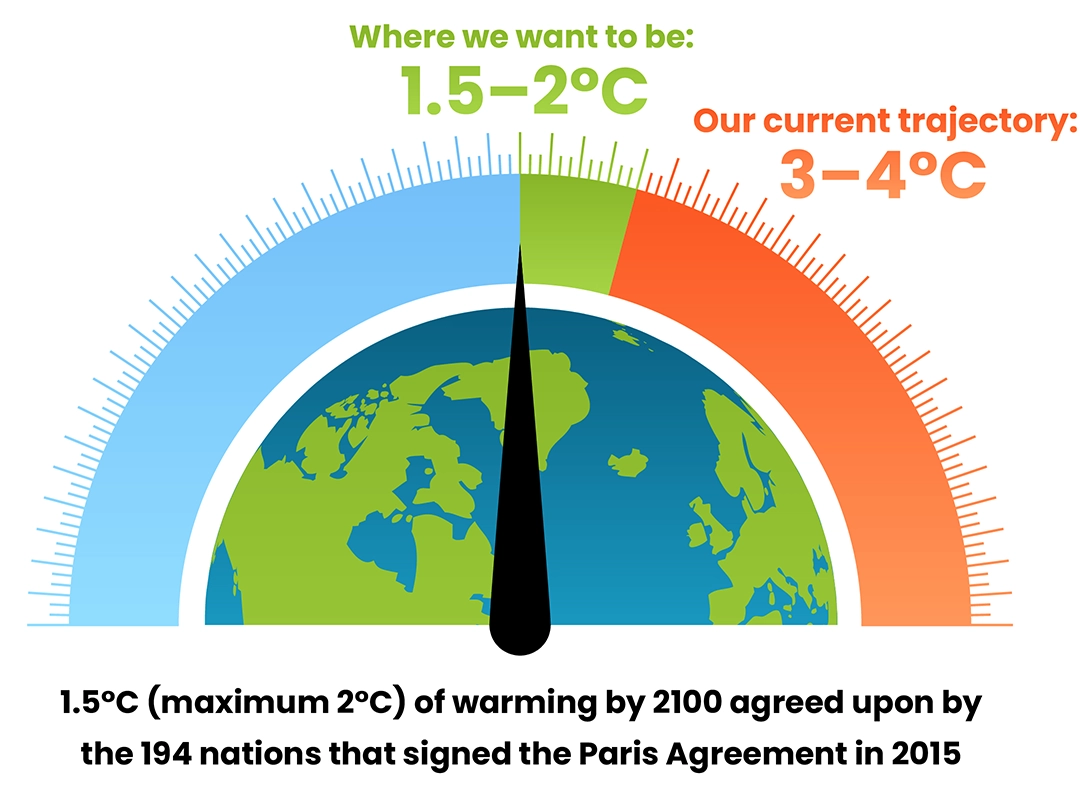
There is a rapidly narrowing window of time to implement existing commitments and raise ambition2. See Why So Urgent?
As per the Paris Agreement and subsequent IPCC modelling and research updates, we need to reduce our emissions by 43% below 2019 levels by 2030 in order to have a good chance of hitting Net Zero emissions by 2050 and avoiding the worst impacts of climate change.
Canada has a 2030 plan3 that, if successful, can result in a 40% reduction in emissions (from our 2005 levels). It involves all of us.
The Federal government will accelerate the transition to ZEVs (zero emissions vehicles) with sales mandates for new vehicles (see the graphs above.) This is aligned to what most other industrialized countries are doing as well4.
The 2026 mandate alongside public transit and other initiatives contribute to our 2030 reduction target, with significant reduction opportunities being realized post 2030 as EVs are phased in. It will still take time to replace the used gas car market with new and used EVs, but the sales mandates are aligned with 2050 Net Zero goals.
The mandates are accompanied with financial incentives for consumers and an expansion of the charging network.
There are also many other initiatives and funds (and more to be advocated for) that increase clean public/shared transport and active transportation and reduce the number of kilometers driven. Read more about some of these below and refer to Canada’s 2030 Emissions Reduction Plan for more information.
Is the goal doable?
Yes.
Some key drivers (pun intended!) in the decarbonization of household transportation emissions are:

• Promoting and facilitating active and public transportation. (How did the Netherlands do it?!)

• Decarbonizing public transportation.

• The promotion and development of urban settings and lifestyles that decrease the number of kms we need to travel. (including high density housing, mixed neighbourhoods with proximate amenities, bike lanes etc.)
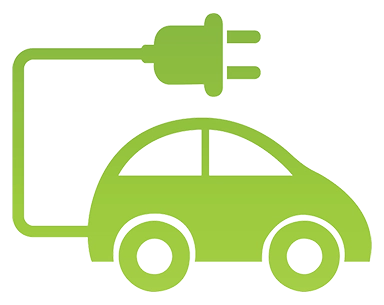
• The promotion of a transition to zero emission vehicles (ZEVs)

• Shifting the electricity grid to no/low carbon energy and expanding its capacity
There is a sea of positive change happening all around the globe on these fronts with some changes spanning back decades.
For reference, let’s look at emissions from personal transportation more generally before we get back to ZEVs. Using alternative forms of transportation — at least some of the time — can go a long way to reducing your footprint.
Travel carbon emissions for various modes of transport (excludes embodied carbon in manufacturing vehicles.)
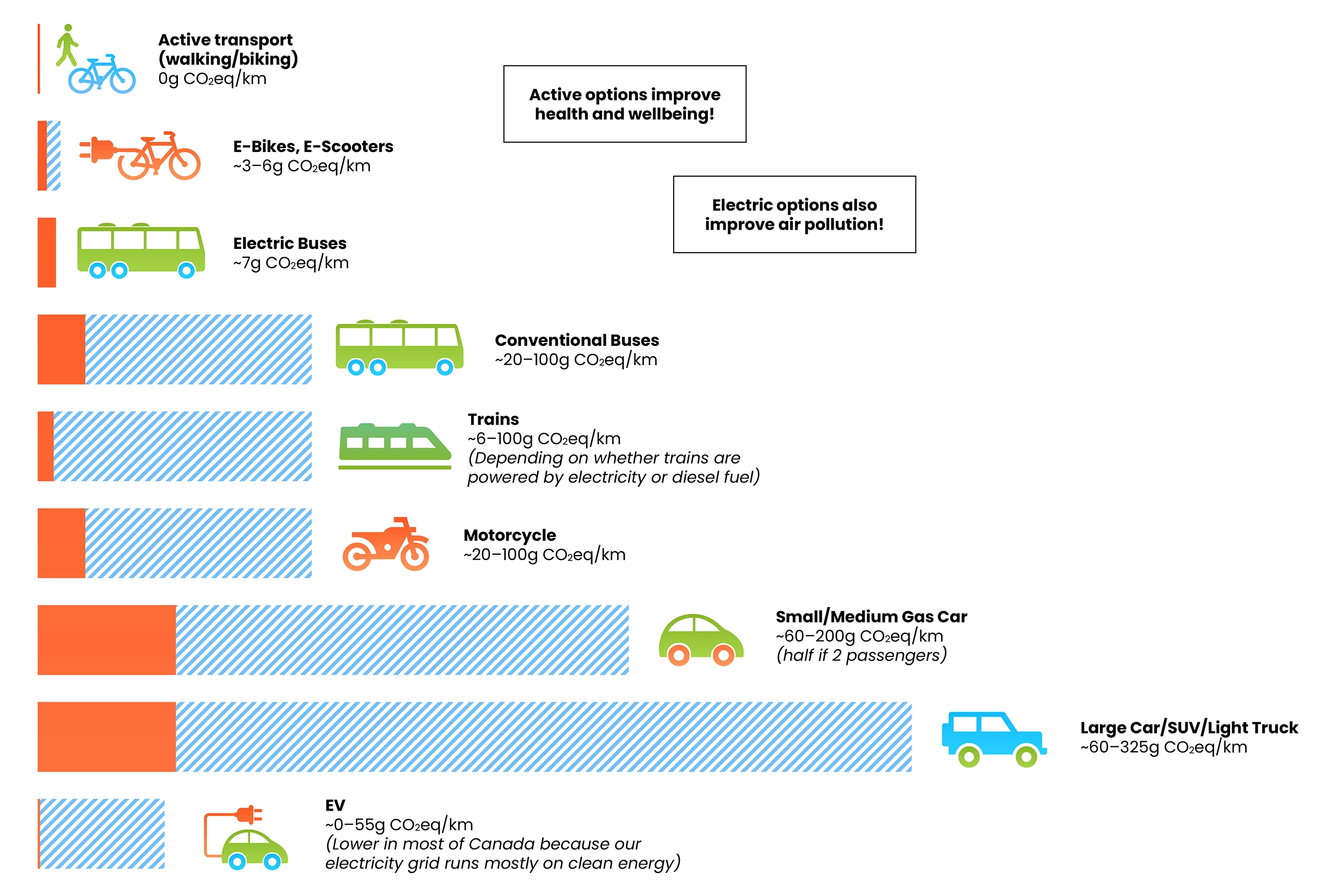
A lot of factors influence carbon emissions beyond direct fossil fuel use including how clean the electricity grid is, the efficiency and size/weight of the vehicle, whether it is used in congested urban settings or open highway settings, etc. The estimates above assume typical occupancy rates and include values applicable for Canada within the depicted ranges.
Whether you need to drive a car or not, there are multiple ways to reduce your footprint and use or advocate for alternative forms of transit.
• Research and use alternative forms of transit in your area that may reduce your footprint — cities across Canada are adding bike lanes, offering e-scooters, purchasing electric buses, installing light rail transit, extending subway lines, improving urban planning to bring your needs closer to you, etc.
• Advocate at work for hybrid work, remote meetings, public transit subsidies, carpooling, carsharing, charging stations, bike racks, etc. as applicable
• Choose green options when using ridesharing services, Carshares, rentals
• Share information with others in your personal and professional circles
• And if you need to drive, increase efficiency by:
• Planning your trips, for example, grouping errands to reduce kilometers driven
• Increase fuel efficiency while you are driving — ie., avoid hard breaking, keep tires inflated, avoid idling, remove unnecessary weight (cargo/racks), maintain your car
• Use a block heater in colder months to increase fuel efficiency
The Major Shift to Zero Emission Vehicles (ZEVs)
The shift to EVs will have a massive positive impact on Canada’s emissions because Canadians love to drive and a majority of adults feel they need a car.20
How is the transition going so far?
Canada is a little behind average global adoption of EVs, but other countries have experienced a rapid acceleration in adoption the decade after hitting a 1% tipping point6 which Canada achieved in 2017; rapid change here is anticipated in the near term.
China, for example, had a 6% adoption rate in 2020, that increased to 29% by 2022 and is still rising rapidly (in 2022, >50% of all EVs on the road around the world were in China.)
World average (2022) — 14% of car sales were EVs
over 50%: Sweden (54%), Iceland (70%), Norway (88%!)
31-50%: Netherlands, Germany, Finland, Denmark
21-30%: China (29%), UK, Switzerland, Portugal, France, Belgium, Austria
11-20%: New Zealand, Israel
0-10%: Canada, US, Australia, Poland, Spain, Italy, Greece, South Korea
IEA (2023), Global EV Data Explorer, IEA, Paris
Canada’s trajectory is below. British Columbia and Quebec are leading the way with 2022 adoption rates of 16.2 % and 12.3% respectively.7
According to a KPMG 2023 study5, almost 70% of Canadians surveyed plan to buy a car in the next decade but only 24% expect to buy an EV (though almost 30% prefer to buy one, and another 30% are considering a fossil gas hybrid.)
For those that will buy a car but are hesitant to make the switch, here are some things to consider before you buy:
• Research your concerns before you make a purchase to see whether sufficient progress has been made between now and then for you to make the switch. Make sure your concern is based on fact, not myth or misinformation. Please see overcoming barriers below.
• Hold off on buying a car a little longer to align your time of purchase to the other changes that are happening that might address your concerns with ZEVs. Buying a new gas car locks in fossil fuel use for the long-term and carries the weight of the embodied carbon emissions used to manufacture the car. It is a highly carbon intensive purchase.
• Not ready for an EV? Consider buying a used fossil gas vehicle that has good fuel efficiency — the newer (and smaller) the car, the better the fuel efficiency and by buying a used one, you are also taking into account the embodied carbon emitted in the manufacture of that car and lowering the demand for new car manufacturing that creates new carbon emissions.
• Combine your car purchase with a plan to make other changes that reduce the kilometers you drive.
• Consider leasing a car for a shorter term so you aren’t locking-in to a long-term fossil gas commitment.
Ready to make the transition? See below for assistance in selecting an EV that meets your needs

Overcoming Barriers

Cost:
Even within in the last few years, the range of makes and models to choose from in different price ranges has expanded significantly and this will only continue. Of course, there is nothing like $10-20K options available in some other countries (e.g. BYD in China). The sticker price parity tipping point is expected to come soon. One study predicts that this tipping point will happen in Europe as early as 2024, by 2025 in China, 2026 in the US and 2027 in India.21
To help with the cost, there are federal22 and provincial23 incentives that apply for many models and in most jurisdictions to offset initial cost. There may also be some financing options as well through your financial institution such as this one offered by RBC24. But even given the higher sticker price, many studies show that EVs have a lower lifetime cost than fossil gas vehicles. For example, have a look at this report by Clean Energy Canada.
This is also a good candidate for advocacy if you feel governments should provide more financial support in the form of provincial subsidies for EVs and related expenses (e.g. home chargers.)

Battery technology and Canadian winters:
It’s true that EV batteries are less efficient in winter and drain faster in very cold weather (e.g. if parked overnight outside in -20°C), but if you are able to park your EV in a garage during the winter and/or have sufficient range for regular use between charges, winter weather is not a big barrier for EV batteries.
You will have to plan accordingly for longer road trips (i.e. you may need to charge more frequently) but there are many long range (e.g. 400km+) models now that overcome concerns around battery drainage in very cold weather and that are suitable for most regions in Canada.
I will note as well that the countries above with the highest levels of adoption are all Northern Hemisphere countries, many of which are at least as cold as Canada.

Battery longevity and sustainability:
Batteries are typically warranted for 8-10 years/160,000km (reflecting the average length of car ownership) but their true lifetime beyond that is yet to be determined since the technology adoption is relatively new. Batteries are also getting better all the time.
Canada is investing in battery manufacturing and also in an ethical EV supply chain — from mining, to EV battery and car manufacturing to battery recycling, which will create jobs as well as provide greater piece of mind around these important ethical issues.16 Even now, most EV batteries are recycled once decommissioned from your car.15

Range Anxiety:
There are many options for EVs with ranges of at least 400km.
If you can install a charger at home (or have access to one at work) and purchase a longer-range EV, range is not likely to be an issue. You may need to plan a bit around charging for the occasional longer road trip and or draining the battery between charges if desired.
For road trips, there are resources and tools to assist you that are either integrated into the car’s GPS and app or available via charging network apps and other sites. Charging on the road is also super convenient as expenses are automatically charged to your account in the app.
The Tesla fast charging network is well represented in many parts of the country and will soon be opened up to other EV models.
And the Federal government is actively working on building out the charging infrastructure with additional funding (announced in their 2030 Emissions Reduction Plan) of $400 million for ZEVs charging stations, on top of $500 million from the Canada Infrastructure Bank, with a target of adding 50,000 chargers (and other ZEV refuelling infrastructure) to the charging network by 2030.

Embodied carbon emissions from the manufacture of EVs:
Buying a ZEV will significantly reduce your Carbon Footprint. However, there are still embodied emissions in the manufacture of the car (currently about 20% of the lifetime emissions) and electricity grids needed to run EVs are not 100% clean today.18
Both the manufacturing and operational carbon footprints of EVs will continue to fall though as our global grids become 100% no/low carbon (targeted for 2035 in Canada.) And regardless, EVs have a much lower footprint than a fossil gas car (also referred to as an ICE, internal combustion engine vehicle, in many references including some herein.)

Breaking the grid:
The capacity planning and ‘greening’ of the electricity grid are covered in the Your Home section. Suffice it to say that government plans account for both the increase in electricity use with the shifts to clean energy and the increase in demand due to population growth and other factors.
In addition, it is worth noting that EVs are actually good candidates to be microsuppliers of energy and, in particular, a battery backup for your home in case of a power outage.
Vehicle to home or vehicle to grid technology also has the potential to supply energy at peak use times and recharge during low grid use/low cost times, potentially easing the need for gas peaker plants that may currently be needed at times of peak demand.
Summary of potential actions
• Increase your active transportation (e.g. walking/cycling)
• Increase your use of public transportation (including public e-scooters)
• Use sustainable rideshares and car shares
• Consider an e-bike, e-scooter, an electric motorcycle
• Buy a zero emissions / electric vehicle
• Buy a used gas car or lease if you can’t switch to electric yet
• Drive your current car for longer if you can’t switch to electric yet
• Reduce your kms driven, maintain your gas car
• Advocate for hybrid work and other ways of reducing kms of gas cars
• Advocate for the shifts to clean public and personal transportation at all levels of government
• Share information with others and learn from others about reducing emissions of personal transportation
Ready to get started? Build a plan that works for you here.
References
1. Lang, T., Li, G., & Mattie, S. (2022, March 28). Data for Canadian Greenhouse Gas (GHG) emissions attributable to household consumption and use of select goods and services along with the associated emissions intensity figures and breakdowns by final demand categories. Government of Canada, Statistics Canada. https://www150.statcan.gc.ca/n1/pub/11-627-m/11-627-m2022003-eng.htm
2. United Nations Climate Change. (2023, September 22). Report: Challenges and Opportunities Identified During First Global Dialogue on Mitigation Ambition and Implementation. UNFCCC.int. https://UNFCCC.int/news/report-challenges-and-opportunities-identified-during-first-global-dialogue-on-mitigation-ambition
3. Environment and Climate Change Canada. (2022). 2030 Emissions Reduction Plan — Canada’s Next Steps for Clean Air and a Strong Economy. https://publications.gc.ca/collections/collection_2022/eccc/En4-460-2022-eng.pdf
4. IEA. (2023, April 26). Global EV policy explorer. IEA. https://www.IEA.org/data-and-statistics/data-tools/global-ev-policy-explorer
5. Brown, T. L., & Peluso, D. (n.d.). KPMG’s 2023 auto poll: The road ahead. KPMG. https://kpmg.com/ca/en/home/insights/2023/02/kpmg-2023-auto-poll.html
6. Jaeger, J. (2023, September 14). These countries are adopting electric vehicles the fastest. World Resources Institute. https://www.wri.org/insights/countries-adopting-electric-vehicles-fastest
7. Government of Canada, Statistics Canada. (2023, September 26). New Motor Vehicle Registrations, annual sum. https://www150.statcan.gc.ca/t1/tbl1/en/tv.action?pid=2010002402
8. Dunsky Energy. (2021). Zero Emission Vehicle Availability — Estimating Inventories in Canada: 2020/2021 Update. https://www.dunsky.com/wp-content/uploads/2021/12/DunskyZEVAvailabilityReport_2021-04-1.pdf
9. Dunsky Energy. (2022). Zero-Emission Vehicle (ZEV) Availability in Canada: Dunsky Updates its Cross-Country Inventory Report for Transport Canada. https://dunsky.com/project/zero-emission-vehicle-ZEV-availability-in-canada-dunsky-updates-its-cross-country-inventory-report-for-transport-canada/
10. Gantman, M. (2023, November 6). EVs to surpass two-thirds of global car sales by 2030, putting at risk nearly half of oil demand, new research finds. RMI. https://rmi.org/press-release/evs-to-surpass-two-thirds-of-global-car-sales-by-2030-putting-at-risk-nearly-half-of-oil-demand-new-research-finds/
11. Transport Canada. (2022, October 14). Eligible vehicles. https://tc.canada.ca/en/road-transportation/innovative-technologies/zero-emission-vehicles/light-duty-zero-emission-vehicles/eligible-vehicles
12. How to get your electric car rebate in Canada. Canada Drives. (n.d.). https://www.canadadrives.ca/blog/news/government-fuels-electric-vehicle-demand-with-electric-car-rebates-in-canada-and-top-affordable-electric-vehicles;
Tchir, J. (2023, May 14). Which provinces have the best EV rebates?. The Globe and Mail. https://www.theglobeandmail.com/drive/mobility/article-which-provinces-have-the-best-ev-rebates/
13. RBC Royal Bank. (n.d.). Electric vehicle (EV) car loans. https://www.rbcroyalbank.com/car-loans/electric-vehicles.html
14. Clean Energy Canada. (2022a, April 21). Electric vehicles save Canadian drivers thousands over car’s lifetime, even at Lower Gas Prices: Analysis. https://cleanenergycanada.org/electric-vehicles-save-canadian-drivers-thousands-over-cars-lifetime-even-at-lower-gas-prices-analysis/
15. Canadian Vehicle Manufacturer Association. (n.d.). Journey of an electric vehicle battery. https://www.cvma.ca/wp-content/uploads/2021/09/Journey-of-Electric-Vehicle-Battery.pdf
16. Invest in Canada. (2023, May 16). Ev Supply Chain. https://www.investcanada.ca/industries/ev-supply-chain
17. McIntosh, J. (2019, April 3). Canadians love their cars, but they hardly ever use ’em. https://driving.ca/auto-news/news/canadians-love-their-cars-but-they-hardly-ever-use-em
18. Union of Concerned Scientists. (2015, October 29). Cleaner cars from Cradle to Grave. https://www.ucsusa.org/resources/cleaner-cars-cradle-grave;
Government of Canada. (2021, July 30). Greenhouse gas emissions performance for the 2019 model year light-duty vehicle fleet. Canada.ca. https://www.canada.ca/en/environment-climate-change/services/canadian-environmental-protection-act-registry/greenhouse-gas-emissions-performance-2019.html#tab2;
IEA. (2021, May 5). Comparative life-cycle greenhouse gas emissions of a mid-size BEV and ice vehicle. https://www.IEA.org/data-and-statistics/charts/comparative-life-cycle-greenhouse-gas-emissions-of-a-mid-size-bev-and-ice-vehicle
19. Canadian Geographic. (n.d.). The Live Net Zero Commuting Challenge. https://canadiangeographic.ca/wp-content/uploads/2023/08/CGEO-216_Challenge_1_Primer_Commuting_ENG_v1.3.pdf
20. Peluso, D., & Tammy Brown. (2023, March 2). KPMG’s 2023 auto poll: The road ahead. KPMG. https://kpmg.com/ca/en/home/insights/2023/02/kpmg-2023-auto-poll.html
21. Gantman, M. (2023, November 6). EVs to surpass two-thirds of global car sales by 2030, putting at risk nearly half of oil demand, new research finds. RMI. https://rmi.org/press-release/evs-to-surpass-two-thirds-of-global-car-sales-by-2030-putting-at-risk-nearly-half-of-oil-demand-new-research-finds/


